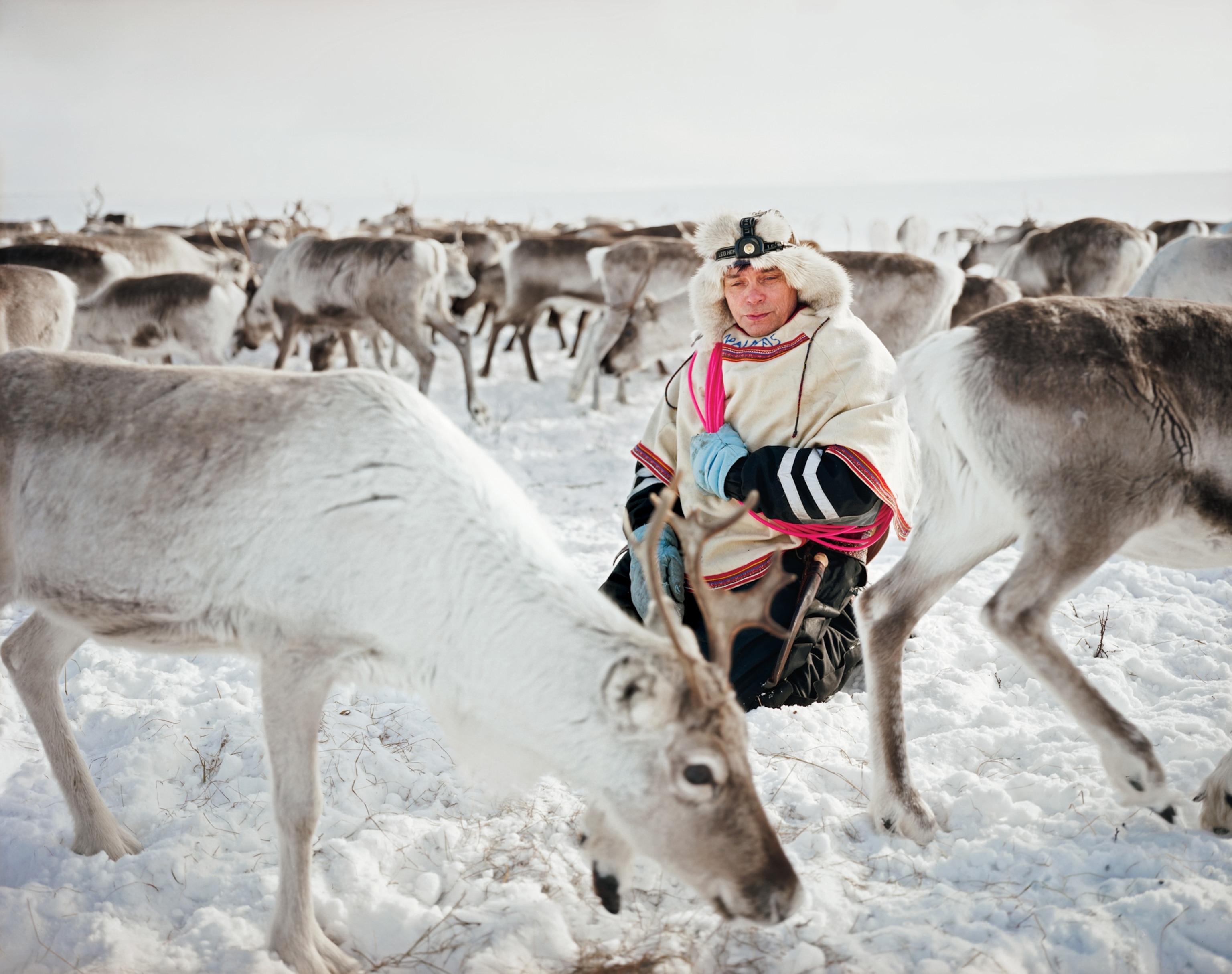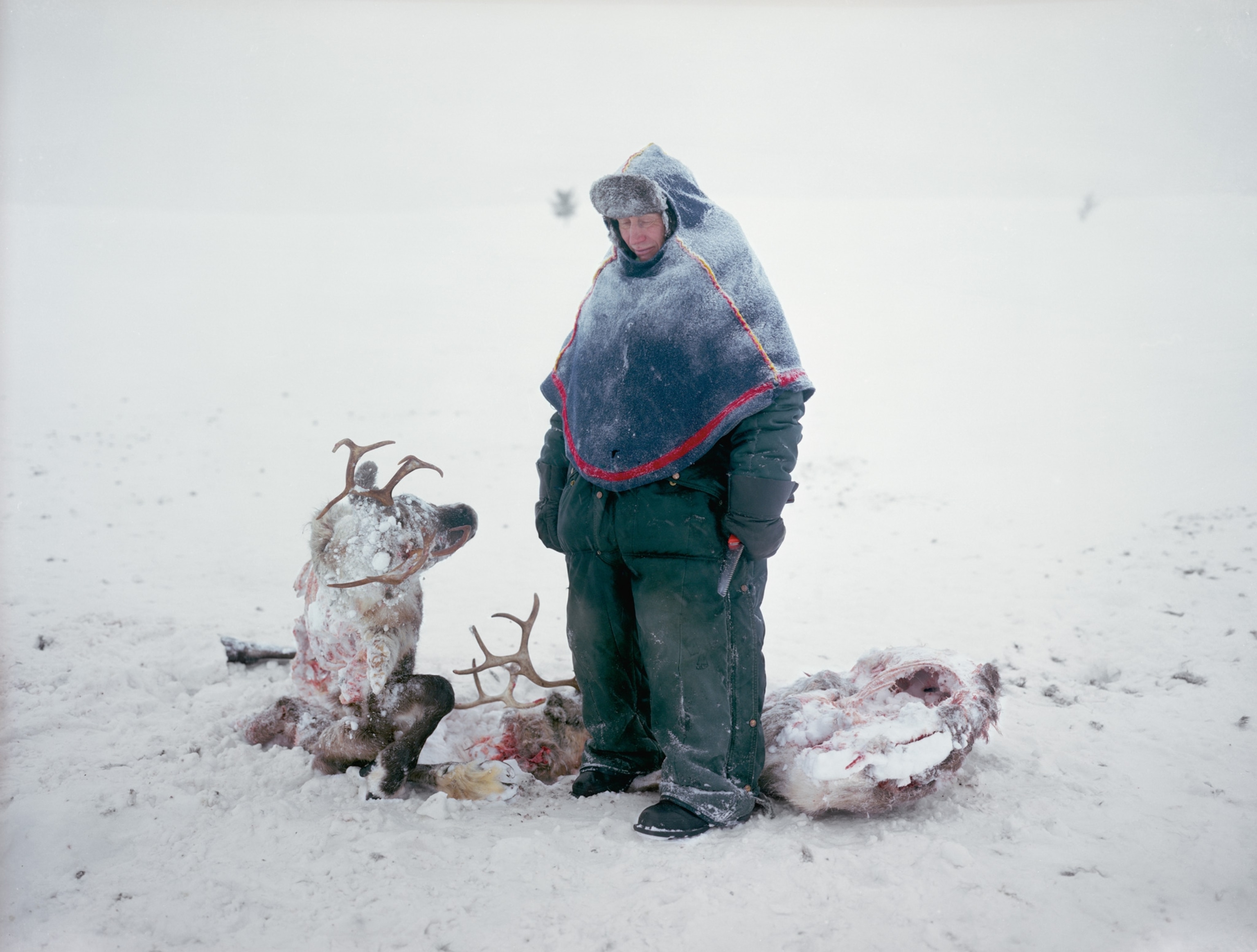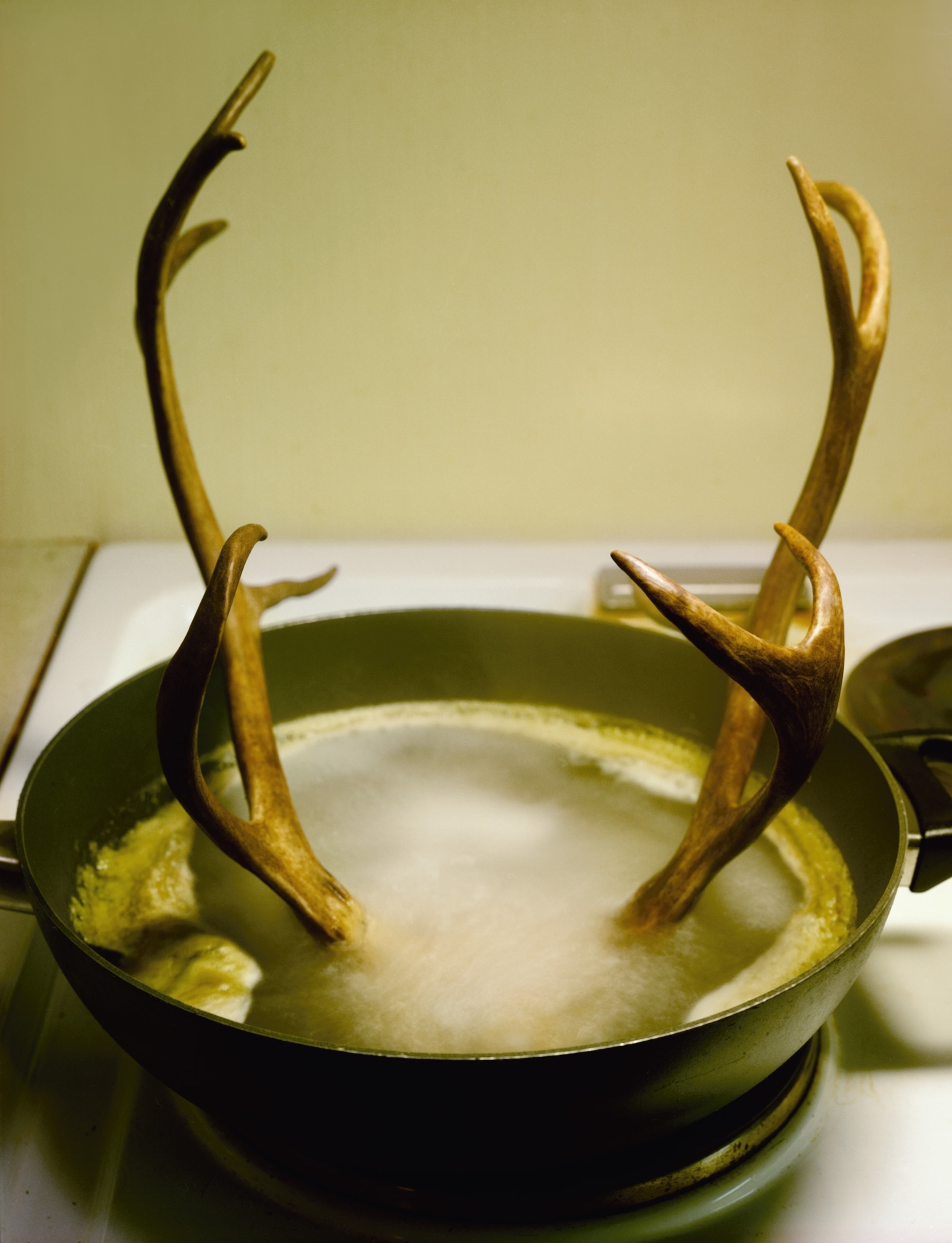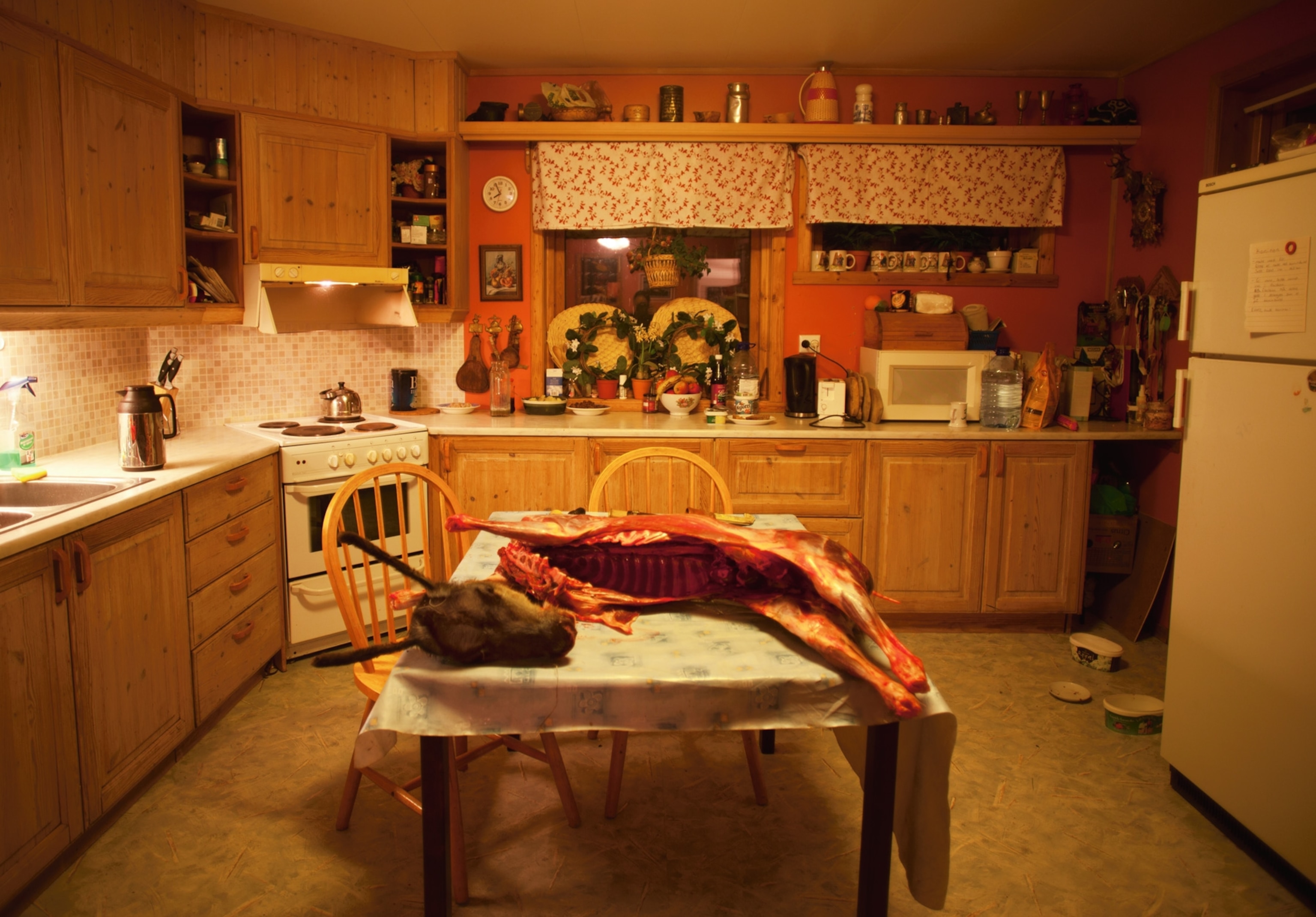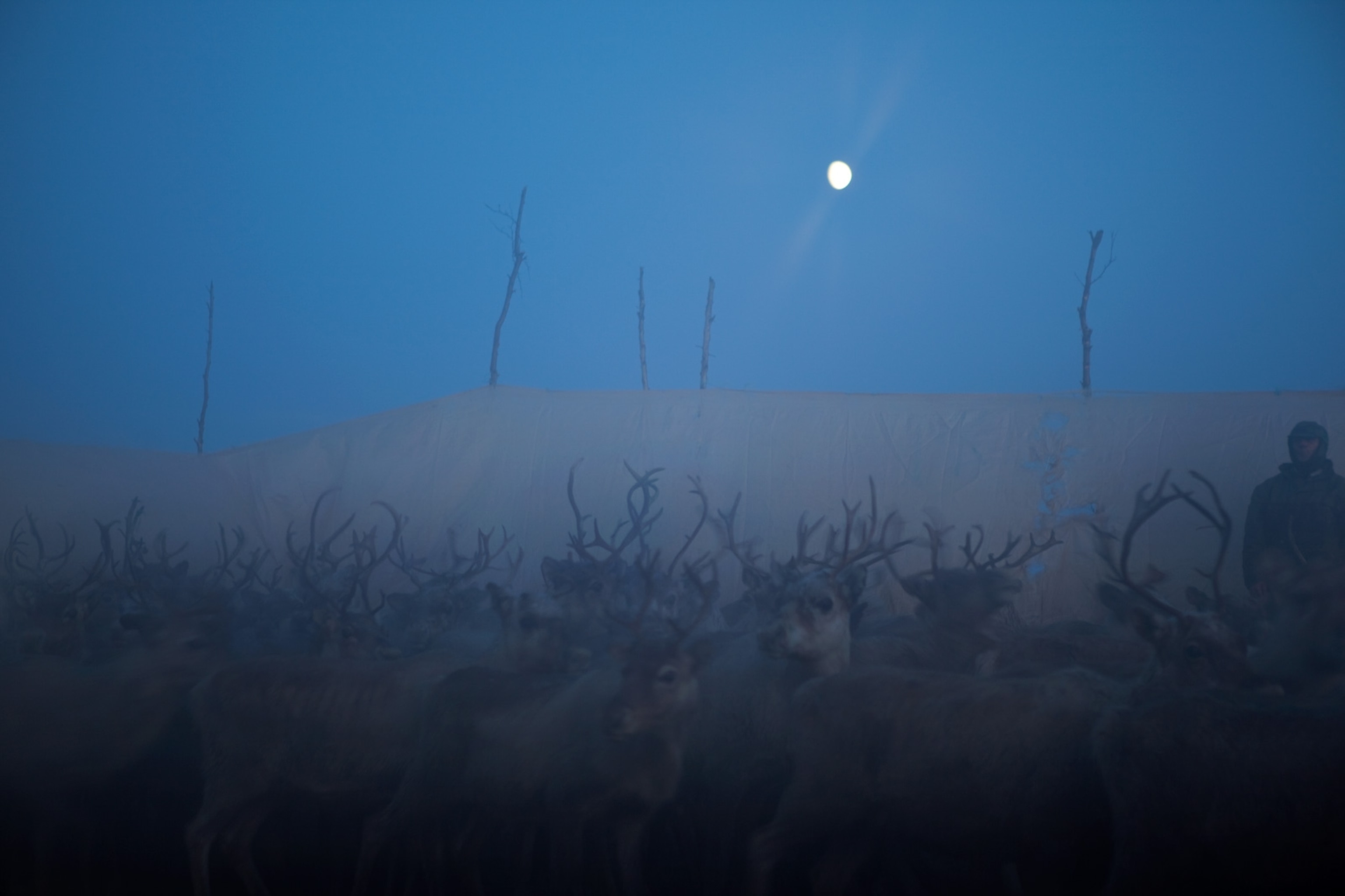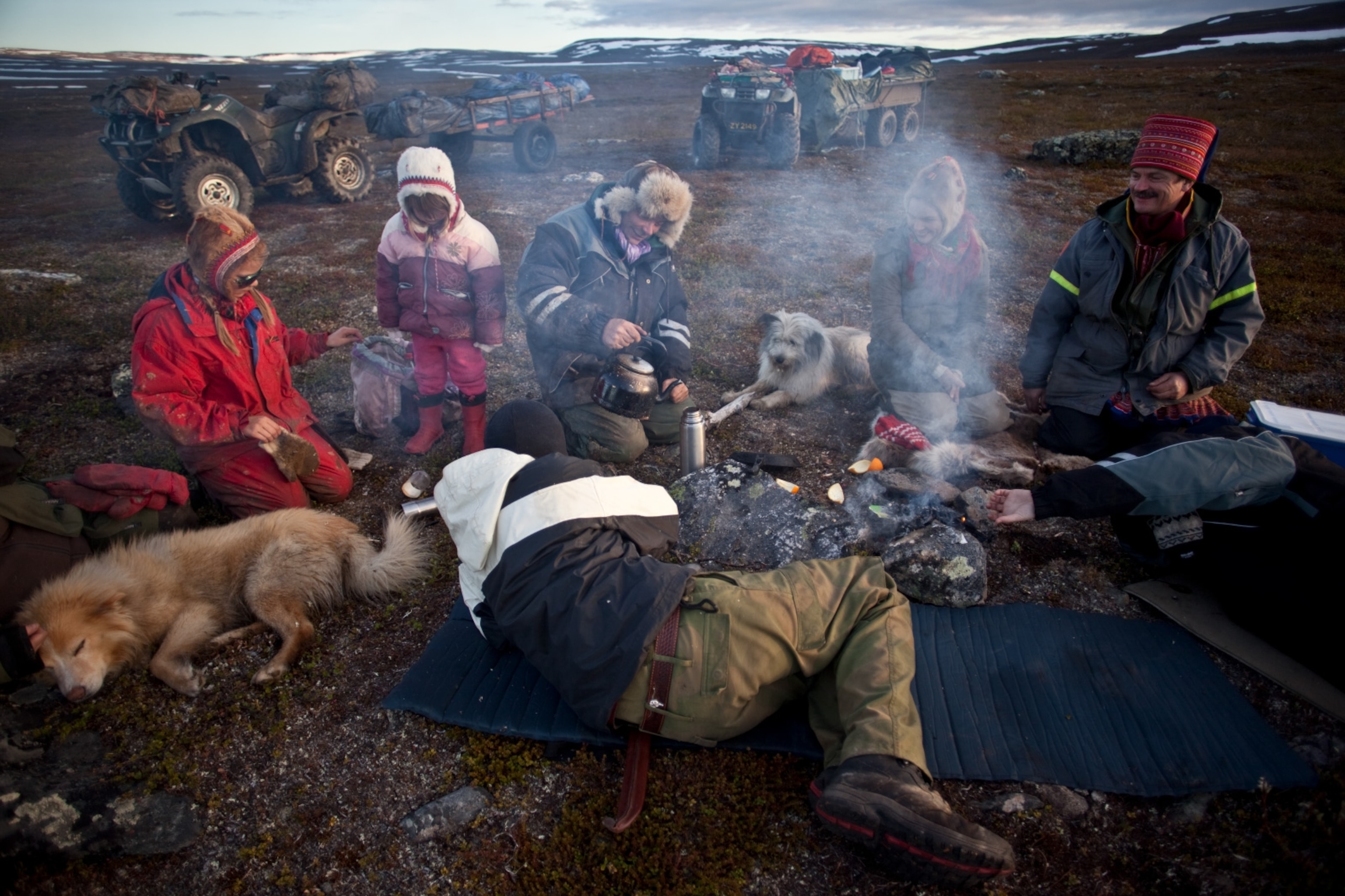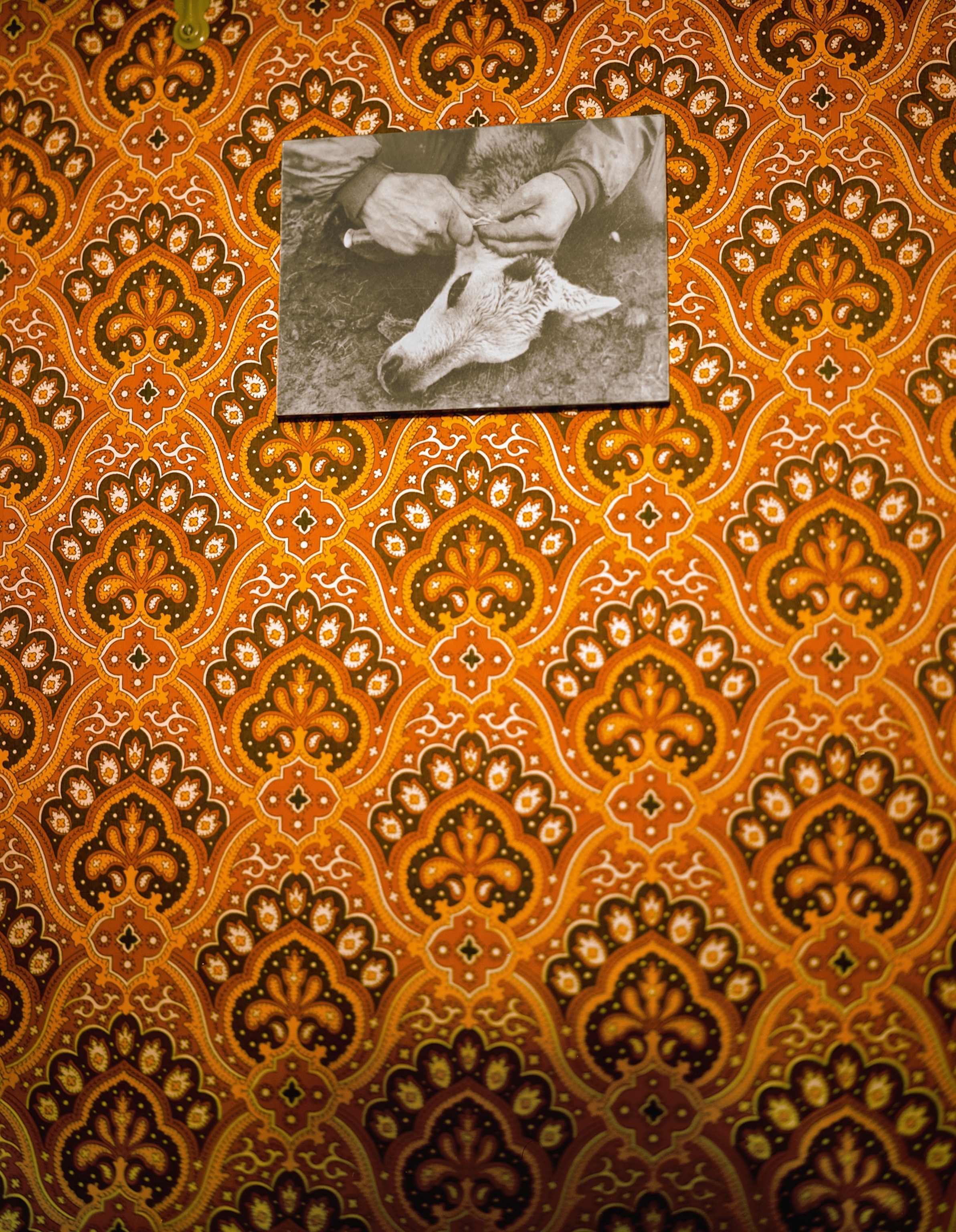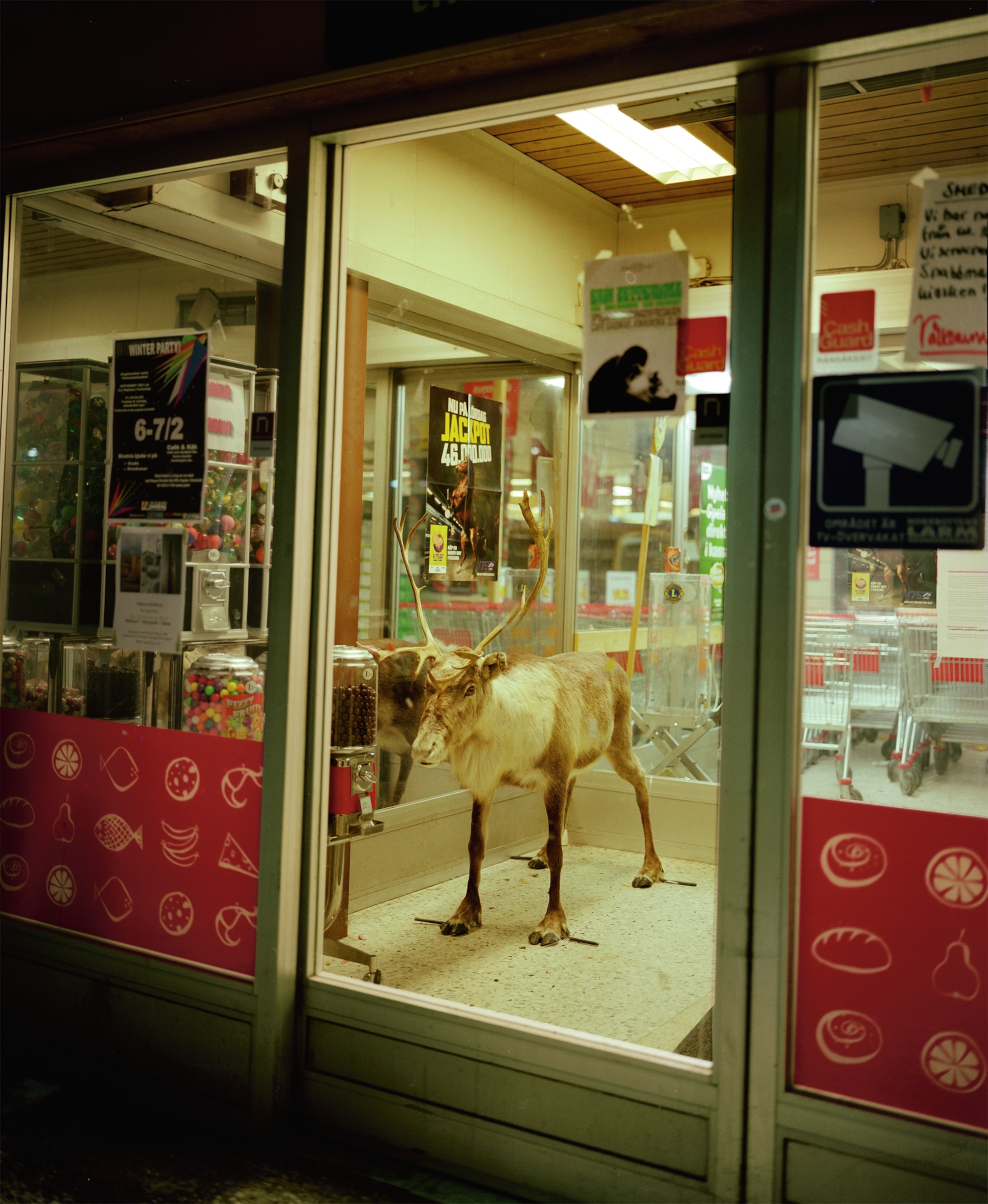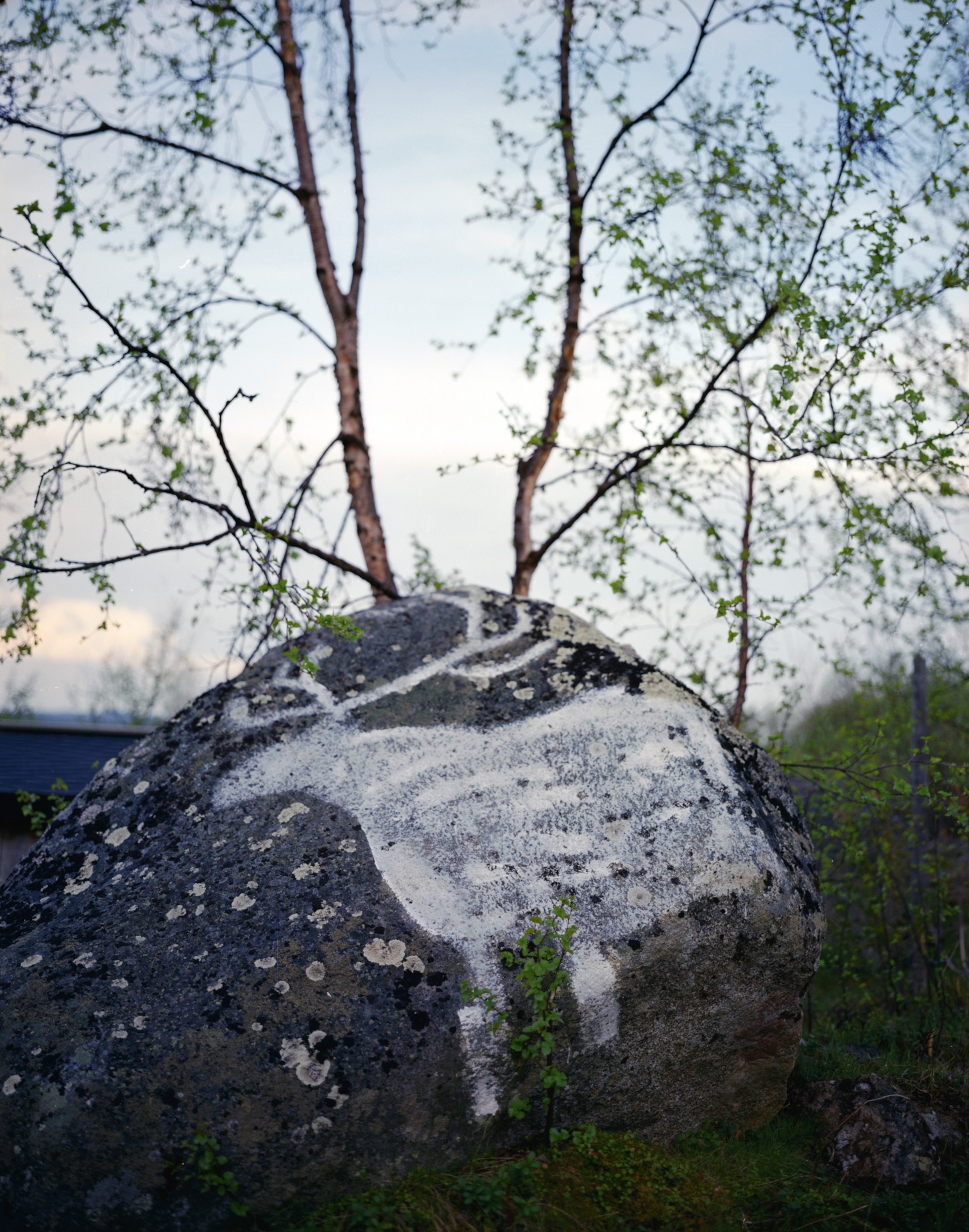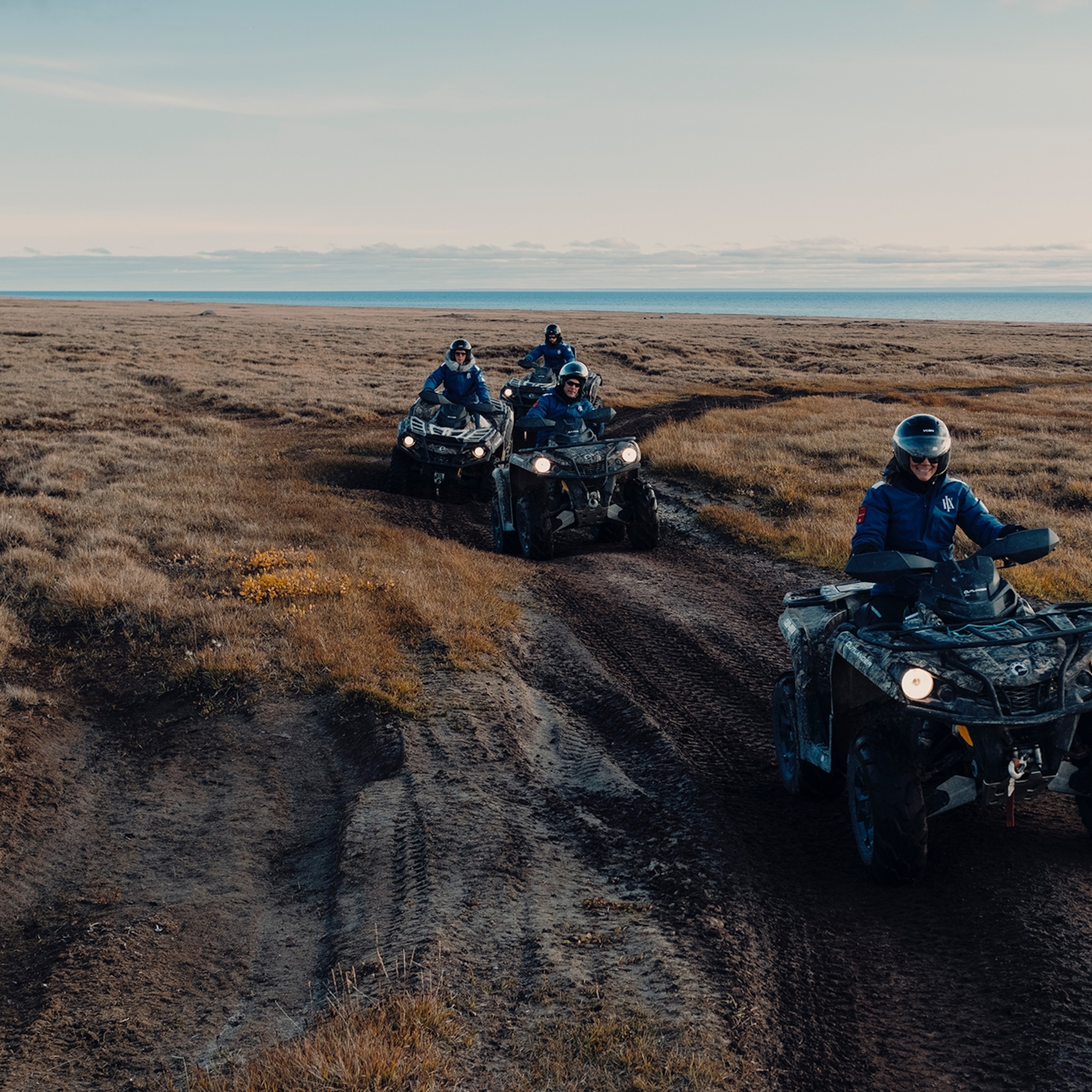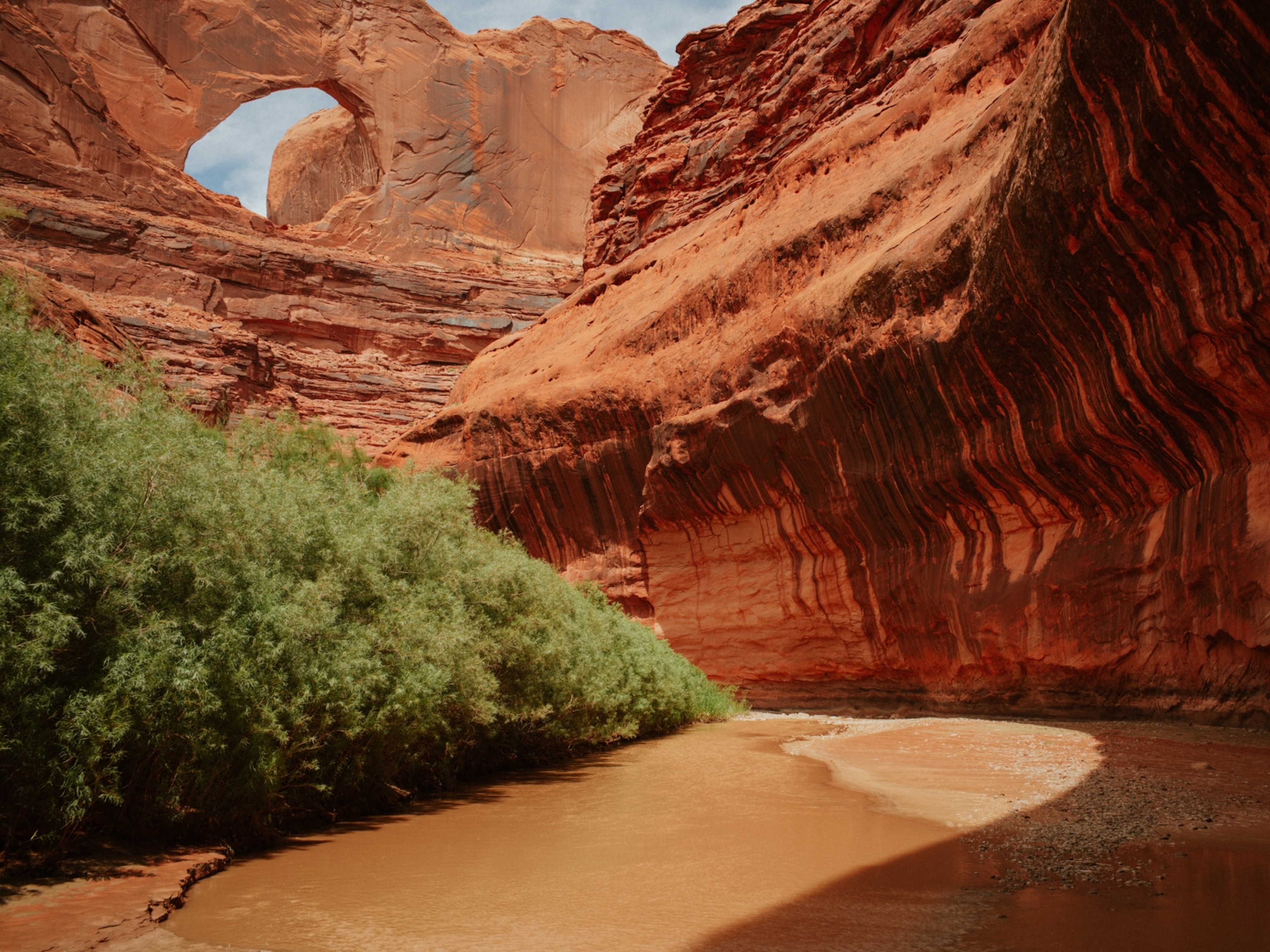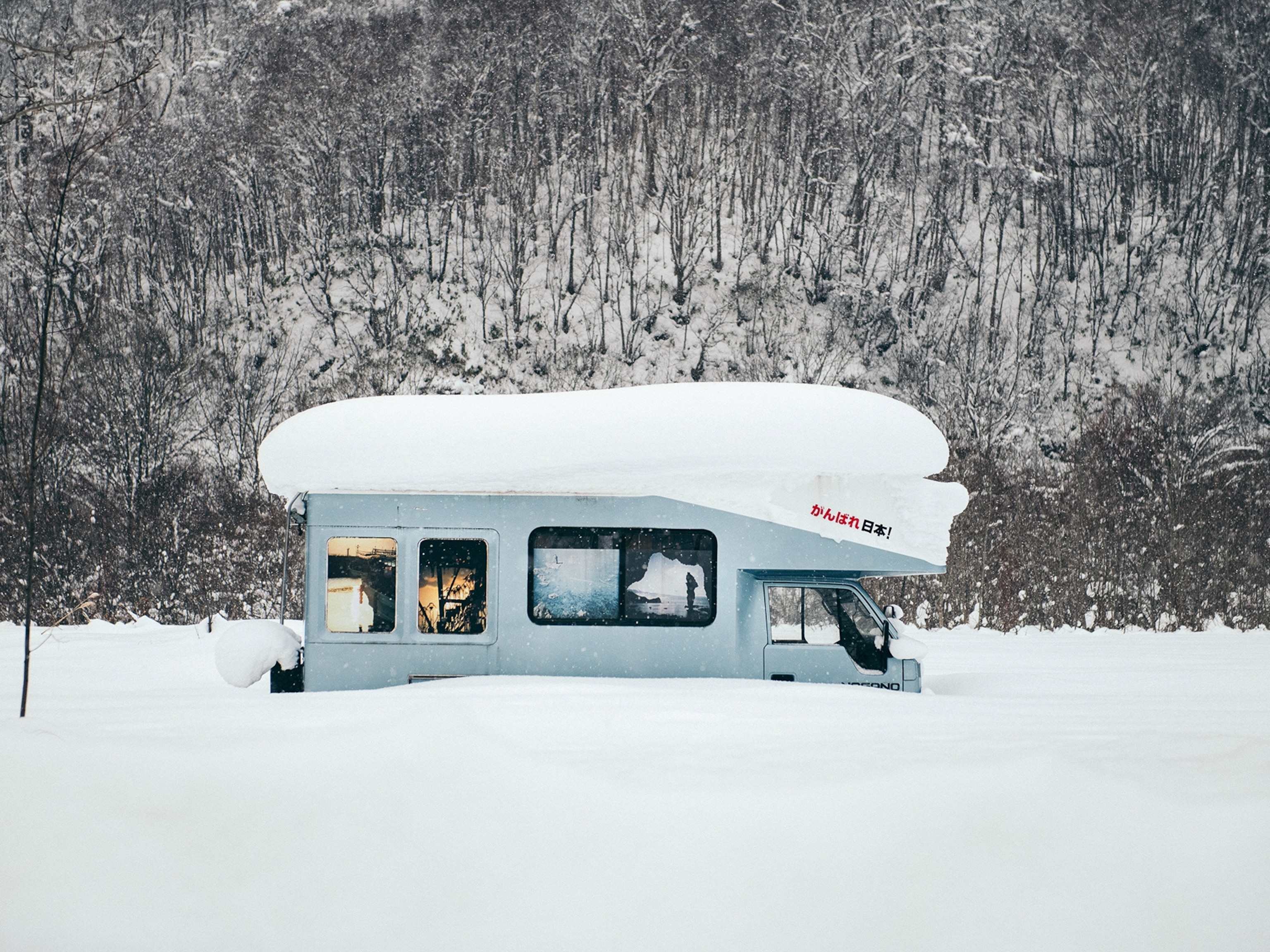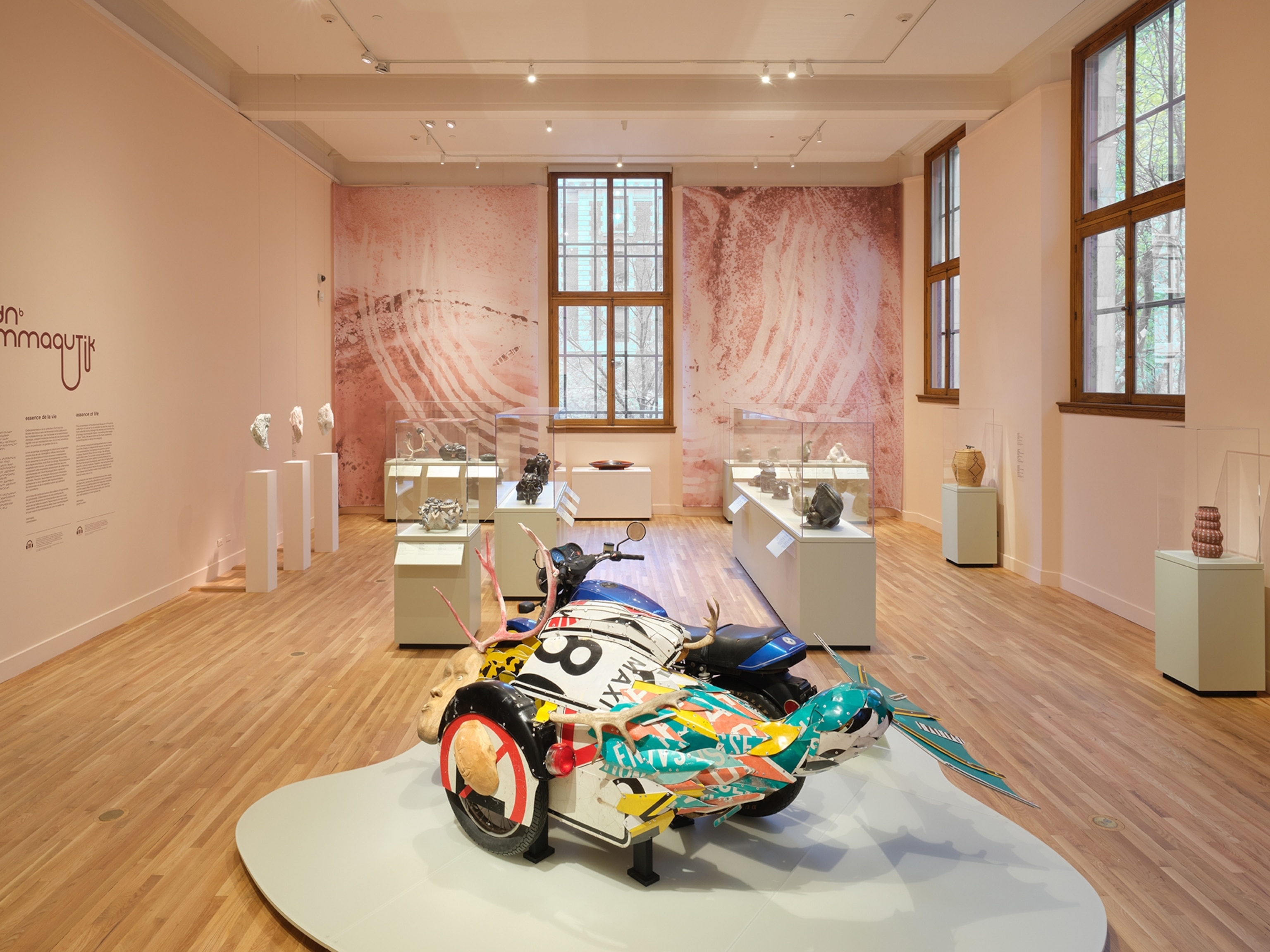Stereotypes have fueled a tourism boom in Europe’s icy North. Can things change?
For decades, tourist experiences such as dog sledding have told a false narrative of Indigenous Sámi traditions.

Winter visitors arriving in Arctic Europe are presented with a bucket list of activities, from chasing the northern lights to cross-country skiing and, increasingly, racing through the snow on a sled pulled by a team of huskies.
In recent years, dog sledding has become a symbol of Europe’s far north—known as Sápmi to the nearly 100,000 Indigenous Sámi who live there. In fact, a 2018 report by Animal Tourism Finland found 4,000 huskies working in Finnish Lapland alone. The problem? “Dog sledding was borrowed from other cultures and transplanted to Lapland’s tourism scene in the 1980s,” says Tuomas Aslak Juuso, president of Finland’s Sámi Parliament, the representative body for the roughly 10,000 Sámi who live in the country. “It is not a part of Sámi or Finnish culture.”
Besides being culturally inauthentic, dog sledding creates tension with Sámi reindeer herders. Unleashed or escaped dogs risk frightening, mauling, and killing reindeer. “Dog sledding activity is also considered a culturally invasive alien species,” Juuso adds, “causing ecological, financial, health, and social harm to traditional Sámi livelihoods that are originally part of our northern nature.”
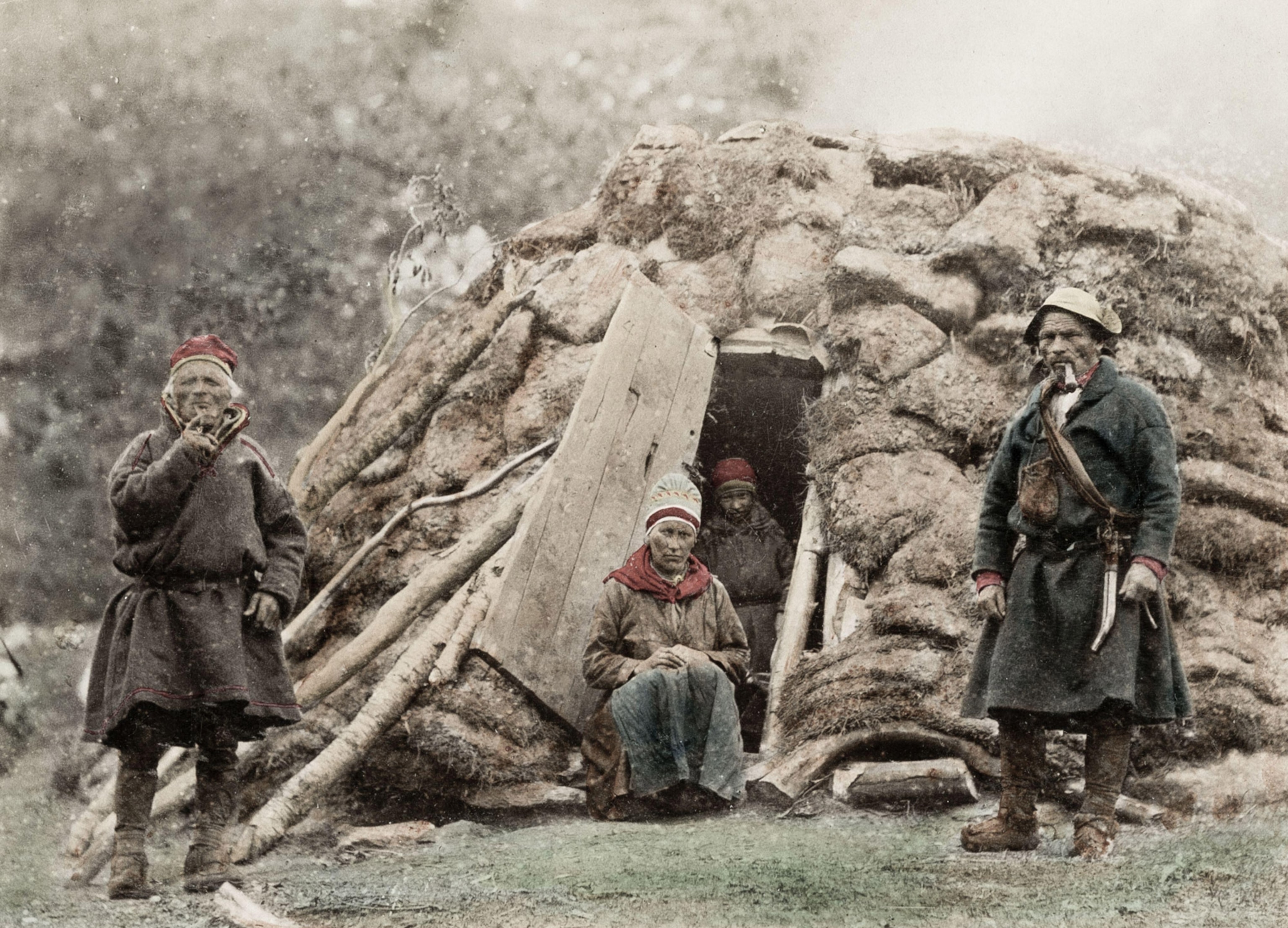
From dog sledding to stereotypical images of Sámi in traditional dress, inaccurate representations of the area’s Indigenous communities have been marketed to visitors for decades. As tourism across Arctic Europe booms—revenue in Swedish Lapland is up 86 percent over the last 10 years—Sámi are finding ways to engage with the industry to tell their stories accurately.
In Finland, the Sámi Parliament in 2018 adopted the Principles for Responsible and Ethically Sustainable Sámi Tourism, a set of guidelines primarily aimed at non-Sámi tourism practitioners working in the Sámi Homeland, as well as visitors.
Highlighting dog sledding (along with the “igloo” hotels that have recently appeared around the region), the guidelines state the potential harm of these “borrowed traditions”—homogenization, “whereby tourist landscapes of the Arctic region begin to resemble one another regardless of [their] diversity and richness.”
Finland’s guidelines are just one step forward in telling the real story of the Sámi people. Across Sápmi, locals are banding together to correct the record, thereby hoping to enrich the travel experience in the region for all.
(These Indigenous women are reshaping Canada’s tourism industry.)
Misinterpreting the freedom to roam
The Sámi Homeland in Finland is one part of Sápmi, a large, diverse area that encompasses northern Norway, Sweden, and Russia’s Kola Peninsula. While the northernmost regions of Sweden and Finland are both called Lapland, the entire Sápmi area has been imprecisely referred to as “Lapland” and promoted as an “untouched wilderness,” despite the long presence of people living and working there.
“Even though nature might seem untouched in many places in the North, it is almost always still utilized by the local people,” says Juuso. “The Sámi still use the area for reindeer herding, fishing, hunting, berry picking, and in other traditional ways. This is important to take into consideration when the tourism industry advertises the Finnish customary law of ‘Everyman’s Rights.’”
In the Nordics, “everyman’s rights,” or the “freedom to roam,” is considered a basic human right. In Finland, Sweden, and Norway, anyone can walk, cycle, ski, and camp nearly anywhere. With those rights comes the responsibility to behave respectfully, but visitors often seem less aware of this element.
Outi Kugapi, a tourism researcher from Finland’s University of Lapland, says that poor interpretation of these freedoms has led to tension between locals and dog sledding companies from other countries. “They don’t know anything about the area, they don’t know anyone, so they don’t really communicate with locals,” she says. “[But] they’ve read the everyman rights, that they have the right to be there and do these activities.”
Misunderstanding has led to tourists “wandering around people’s backyards and looking through the windows,” thinking “that this is okay to do,” Kugapi says. Developers make the same mistake but on a bigger scale. Ski resorts built on traditional reindeer grazing lands negatively impact a vital Sámi industry. Meanwhile, Sámi see “the large number of tourists, the litter and how more and more tourists are using the land, but [Sámi people see] very little of the income,” says Lennart Pittja, a longtime tourism professional in Sweden.
(Modern developments are threatening Sámi traditions.)
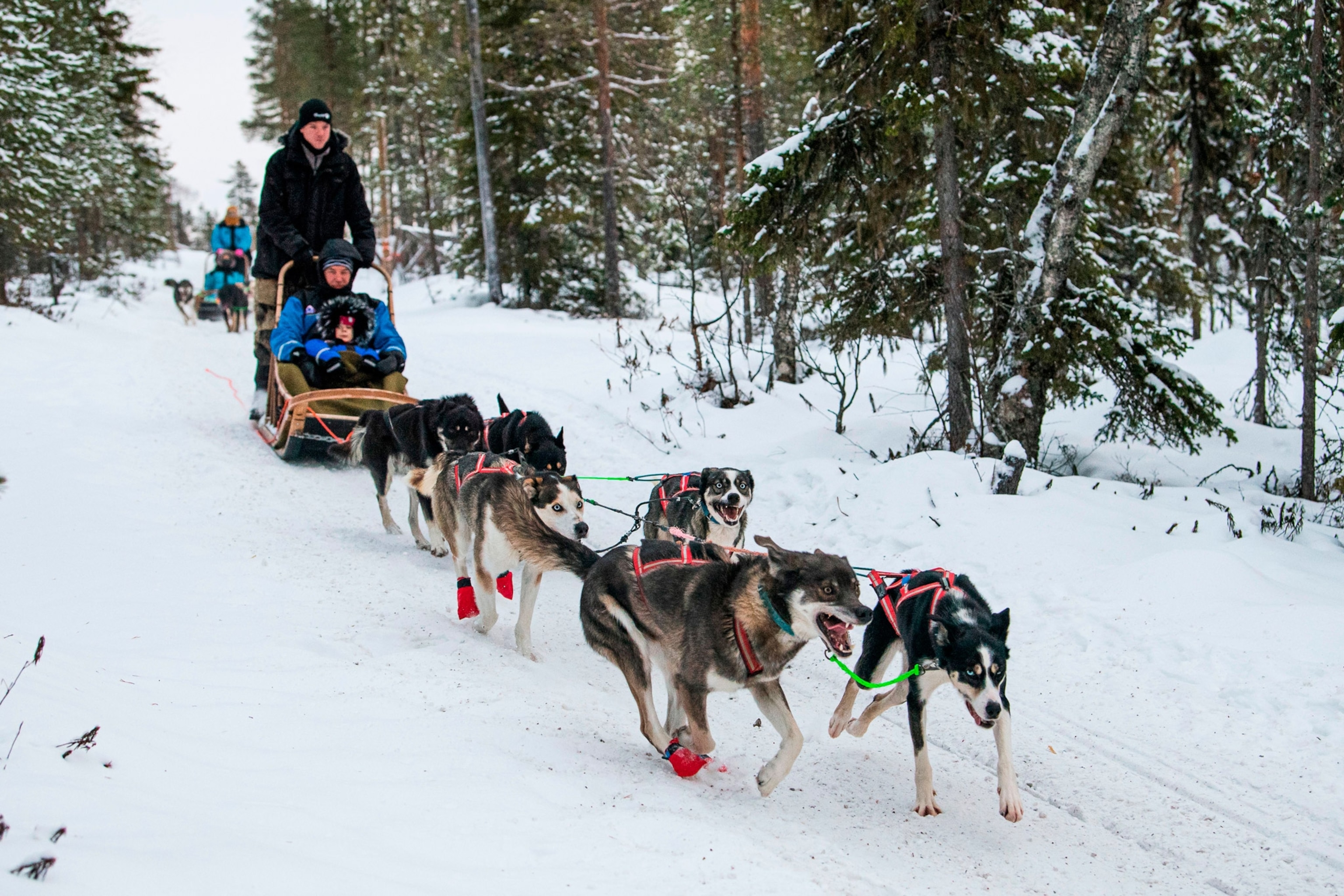
Kugapi hopes that the Culturally Sensitive Tourism in the Arctic (ARCTISEN) project she launched with a group of researchers will help. ARCTISEN supports tourist businesses in Finland, Sweden, and Norway in creating products that accurately reflect and benefit the region. Through publications, digital toolkits, and a soon-to-launch free online course, the project highlights negative experiences and encourages local communities to determine how their cultures are used in tourism.
“Entrepreneurs will have concrete tools” for making their businesses more culturally sensitive, says Kugapi. Already, “our activities have raised awareness and made them think [about] tourism differently.”
“Cultural sensitivity is not something you can achieve, it’s more a state of mind, a way of working,” Kugapi continues. “We hope that the material we create will enhance tourism entrepreneurs’ [and] decision makers’ capacities to be more culturally sensitive in the future.”
Decades of marketing mistakes
Misunderstanding extends beyond physical spaces to identity. In Finland, which has the largest share of Arctic tourism businesses, marketing missteps about who the Sámi are date back to the mid-20th century, when people started traveling to ski in Finnish Lapland.
Sámi people became “an attraction and started to be used in tourism marketing,” Kugapi says. Tourists’ demand to see traditionally dressed Sámi became so great that workers were told to dress up and pretend they were Sámi. It’s now a single, stereotypical image that tourists have come to expect.
Worse, rituals were invented, such as the “Lapland baptism,” a ceremony in which a “shaman” wearing Sámi dress baptizes tourists. The dubious practice continues today.
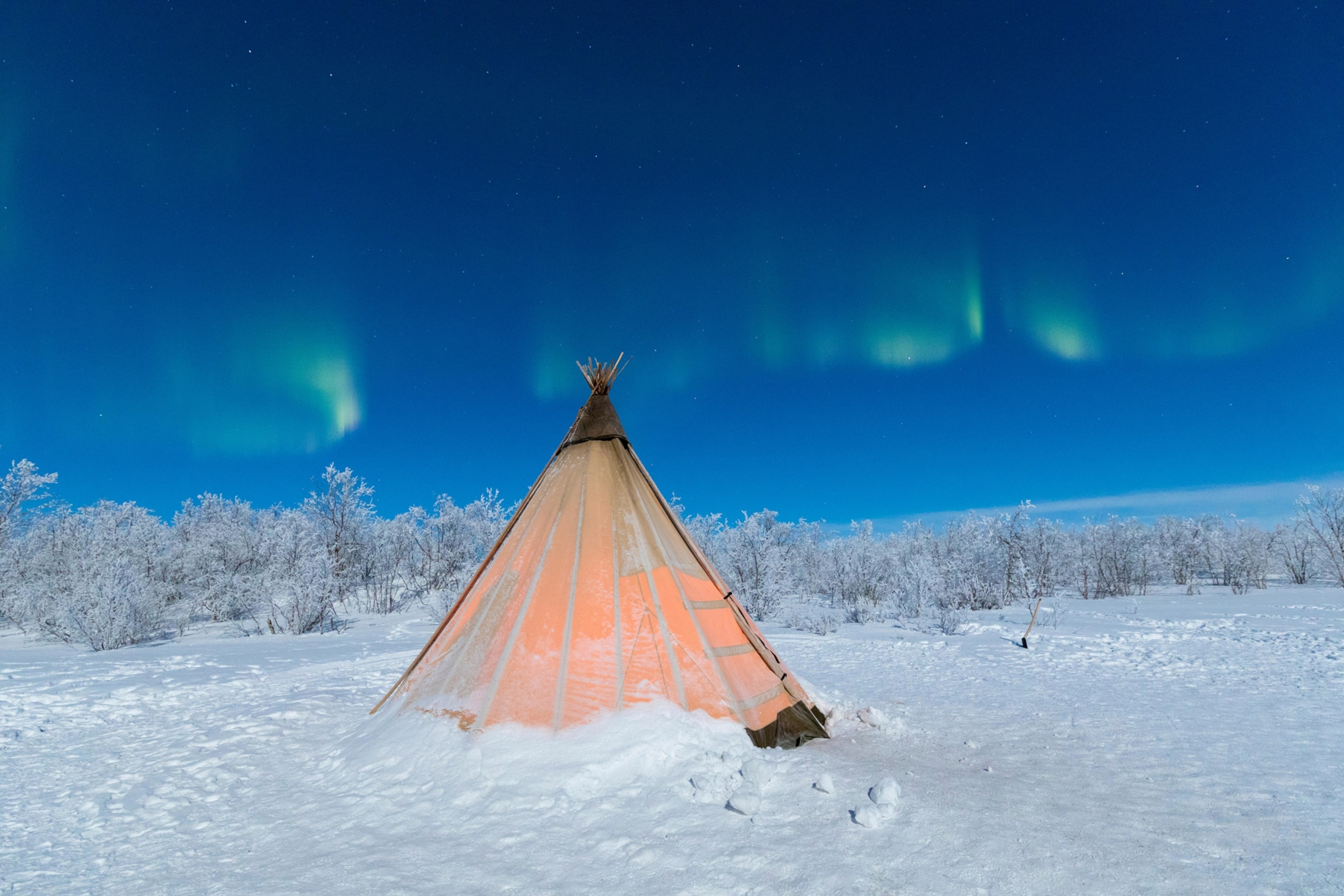

For visitors, seeking Sámi-led and -approved experiences can be complicated. A major problem, says Juuso, is that such experiences are marketed alongside inauthentic products. “Visitors are faced with a serious mismatch of products that may be marketed under the same umbrella of ‘authenticity,’ though only some of the products are truly of local origin,” he says. “And the tourists have no knowledge of how to separate [them].”
The Sámi Parliament in Finland foresees a future Sámi tourism certificate or label with both shared and country-specific criteria, as well as a Sámi Tourism Information Center to offer visitors guidance.
“There is an acute need for creating criteria, rules, and a monitoring system to guarantee the authenticity, responsibility, and ethical sustainability of tourism based on Sámi culture, as defined and accepted by the Sámi community concerned,” says Juuso.
Help for finding authentic products
Such an authenticity program existed in Sweden about 10 years ago. Before it was discontinued due to lack of funding, VisitSápmi awarded the “Sápmi Experience” label to companies offering genuine, ethical, and sustainable Sámi experiences. The sustainable travel organization also tried to promote “more nuanced marketing of what Sápmi is, to get away from this stereotypical way of focusing on clothing,” says Lennart Pittja, who was the program’s project manager.
Throughout the Nordics, other similar efforts are on the rise. The Nature’s Best Sápmi label awards Sámi-led tourism products that meet criteria based on the Swedish Sámi Parliament’s sustainability program, Eallinbiras (“our living environment” in North Sámi). “One of the most important reasons for having a Nature’s Best Sápmi label is to let the Sámi themselves tell their story in their own way,” reads the website’s description.
In Norway, a collaborative project between the Sámi Parliament in that country and Tromsø Municipality launched in 2019 to ensure that information about Sámi culture is respectful. The goal of the project, named Vahca (“fresh snow”), is “for Tromsø to be a pioneer municipality in how to manage Sámi culture in tourism,” according to a statement on the Parliament’s website.
Back in Finland, Visit Finland distributes the country’s Sámi Parliament guidelines in the tourism organization’s “Sustainable Travel Finland” educational workshop, launched last year. “If we are made aware of unethical Sámi tourism practices in Finland … we do contact the company and discuss the principles of ethically responsible Sámi tourism with the company in question,” says Liisa Kokkarinen, manager of Visit Finland’s Sustainable Development project.
(Sea turtles, hummingbird charms, and other souvenirs not to buy.)
Sámi leading the way
More importantly, the tourism industries in these countries are seeing the value in having Sámi lead the way. The Johtit Project, whose name translates to “on the move,” is one example. Run by the Northern Norway Tourist Board and supported by the Sámi Parliament in Norway, the project is a network of 21 Sámi-owned tourism businesses offering activities that go beyond the stereotypes.
Strategic Development Manager Anja Christensen says that the project rose from concerns about how Sámi tourism was marketed, often with a Sámi person clad in national costume, posing alongside a reindeer and a lavvu (a traditional tent). “This is not the right picture to present to the world because Sámi culture is also a modern culture,” says Christensen. “We want to present both the traditional and the modern Sámi culture [and] develop new tourism experiences.” The board has also adopted photo guidelines to ensure their images “show authentic life, not only the fairytale vision of Sámi culture.”
At Pittja’s company Sápmi Nature, glamping experiences in Laponia World Heritage Area in Swedish Lapland focus on storytelling and sharing Sámi knowledge and values with guests. He says this type of small-scale, sustainable tourism fosters understanding and mutual respect for his community, while benefiting local economies. Tourism can also, he says, “serve as a counterweight to other, more damaging industries,” such as mining, forestry, and wind farms, that seek to exploit Sápmi’s natural resources.
Over the years, Pittja says he has seen Sámi people gain more control over how their cultures are used by tourism. Yet, the industry needs more Sámi entrepreneurs in the travel industry.
“Tourism is here to stay. We as Sámi communities can’t say no to tourism, it’s not in our hands anymore,” says Pittja. “We can only get more involved in creating better and more beneficial tourism based on Indigenous values and practices.”


